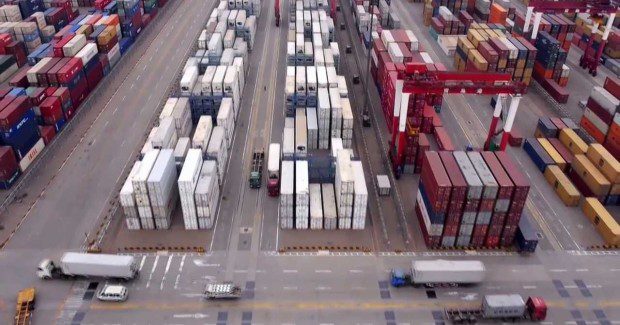Insights Into 2016 U.S. Manufacturing Trends
Jacob Prak of MMI shares some insights for shops to become more competitive.
Posted: February 5, 2016
With 25 years of experience in manufacturing and international trade, Michigan Manufacturing International (MMI; Stevensville, MD) is ideally suited to partner with U. S. manufacturers to help them take full advantage of the winds of change while avoiding the resulting storm. In a recent interview Jacob Prak, the chief executive officer of MMI, provided insight into manufacturing trends for 2016 and beyond:
MANUFACTURING BUFFETED BY THE WINDS OF CHANGE
The forces that are causing changes in U. S. manufacturing are currently stronger and more difficult to manage than at any time since the last recession. The price of oil suddenly dropped, which created a depression in the oil and gas industry but simultaneously opened up opportunities in industries that rely on energy. At the same time, a recent change in law now allows for the export of U. S. crude oil and has partially eliminated the price advantage that U. S. refiners and oil and gas users had over their foreign counterparts. The U. S. dollar has been gaining against most currencies but possibly most importantly against the Chinese RMB. Where U. S. manufacturers could seemingly count on Chinese and other foreign competitors’ costs rising relative to their own, now that trend has slowed or reversed. It seems likely that this will accelerate as the Federal Reserve finally begins to tighten the money supply.
ADVANCING TECHNOLOGY: WHAT IT MEANS FOR MANUFACTURING
Just as the competitive landscape is changing for U. S. manufacturers relative to their foreign counterparts, so is the market environment for manufactured goods. Design and manufacturing are becoming simultaneously more automated and more flexible. Real-time information gathering and analysis, often through the Internet, are allowing factories to react immediately to changes in conditions or requirements. Continued improvements in design tools permit them to ever more easily interface with production equipment. This has shortened the time and effort required to get from concept to production.
One of the main results of these changes is that short production runs of high-quality products have become possible, while long-run production is reaching quality and efficiency standards that were not possible even a few years ago. Conversely, for simple, undemanding, manufactured goods, there has been a democratization of the production process that either has or will drive out established producers.
SURVIVAL STRATEGY
U. S. manufacturers should be aggressive to take advantage of falling costs while at the same time finding new opportunities created by these economic forces. To be successful, companies should:
- Target those markets that benefit from lower energy and commodity prices such as transportation.
- Modify supply chains to reflect the new realities.
Maybe, somewhat ironically, international sourcing capability will be an essential component in any U. S. manufacturer’s survival. By intelligently sourcing some inputs from cheaper foreign sources, domestic companies will be able to concentrate on those activities that set them apart and thus continue to generate acceptable rates of return. Also, the commodity price swoon must be reflected in any manufacturer’s cost structure.
Finally, U. S. manufacturers must be technology leaders and only produce those things for which they have a unique competency. As always, those with the best knowledge of their markets from both a supply and marketing point of view will thrive. Geographically unlimited knowledge of customer requirements, production technology and supply chain capability will be indispensable. Those companies with a presence in multiple markets will have an advantage over those that do not. To take full advantage of the strength of the dollar or the relative changes in U. S. versus international energy prices, marketing, sales and purchasing resources need to be properly deployed.
Founded in 1991, MMI specializes in supplying manufactured to print assemblies and components to original equipment manufacturers (OEMs). Products include assemblies, castings, stampings, machined parts, gears, bearings and more. Services include product engineering, manufacturing, inventory management and stocking programs — all designed to streamline client operations and increase profitability. With manufacturing facilities in Stevensville and Hosur, India, and supply chain management offices in China (3), India, South Korea and Vietnam, MMI can provide the most effective, highest quality mechanical product solutions the world has to offer.











